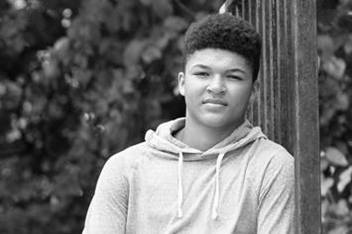COVID-19 and the Compounding Children’s Mental Health Crisis

By David Axelson, MD, Chief of the Department of Psychiatry and Medical Director of Big Lots Behavioral Health Services at Nationwide Children's Hospital
There was a children’s mental health crisis before COVID-19. One in 5 children was already living with a mental health disorder. Suicide was already the second leading cause of death among young people.
As U.S. Surgeon General Vivek H. Murthy, M.D. highlighted in a special December advisory called Protecting Youth Mental Health, the impact of the pandemic is just starting to be calculated. But what research has shown so far is that in some ways, children are struggling even more than they were before COVID-19:
- Emergency Department visits for suspected suicide attempts were nearly 51% higher for adolescent girls in the spring of 2021 compared to the same time period in 2019, before the pandemic.
- As many as 25% of youth around the world are experiencing clinically elevated depression symptoms – double the estimated pre-pandemic level
- As many as 20% of youth are experiencing clinically elevated anxiety symptoms – again, double the pre-pandemic level
Last fall, the American Academy of Pediatrics, the Children’s Hospital Association and the American Academy of Child and Adolescent Psychiatry joined in a declaration calling child and adolescent mental health a “national emergency.”
Some families cannot get the services they need where they live around the country; others wait months for appointments. As I and many others have written before, there has long been a shortage of psychiatrists and other behavioral health professionals.
Nationwide Children’s Hospital has been working for years to expand our capacity to serve children with mental and behavioral health concerns. Our efforts have led to the Big Lots Behavioral Health Pavilion, which opened just as the pandemic was beginning in March 2020. It’s the largest pediatric mental health care and research facility of its kind in the United States. In 2013, we had 123,000 outpatient visits; in 2021, with the help of our pavilion and a greatly expanded staff, we had more than doubled to 257,000 visits.
Still, it’s a challenge to care for every child who has mental health concerns, especially right now. We have worked with many partners to develop of an integrated “System of Care” in our area, and that has helped. Nationwide Children’s serves as a hub of treatment for young people in crisis, or for those who should be treated in a hospital setting, while other children can be managed in less intensive settings – some, even in their schools.
We train other health care providers and care givers to do that work, and we support them in it. Our Project ECHO is a learning collaborative that helps community providers become more comfortable managing behavioral health conditions. Our program of Behavioral Health Treatment Insights and Provider Support, or BH-TIPS, allows pediatricians and other primary care professionals to have virtual 15-minute consultations with our experts for guidance on diagnosis, medication and other issues.
Those programs are particularly important for underserved and rural communities, as is the hospital’s expansion of programs in schools that are designed to help prevent behavioral health issues and help children with self-regulation.
We have been happy to share our experiences with other hospital systems and communities looking to increase their own capacity. It’s an ongoing struggle, for us and many others, to help every child who needs services.
Nationwide Children’s continues to learn and implement new strategies. It’s a hopeful sign, though, that so many in the United States are beginning to focus on the issue of children’s mental health.



